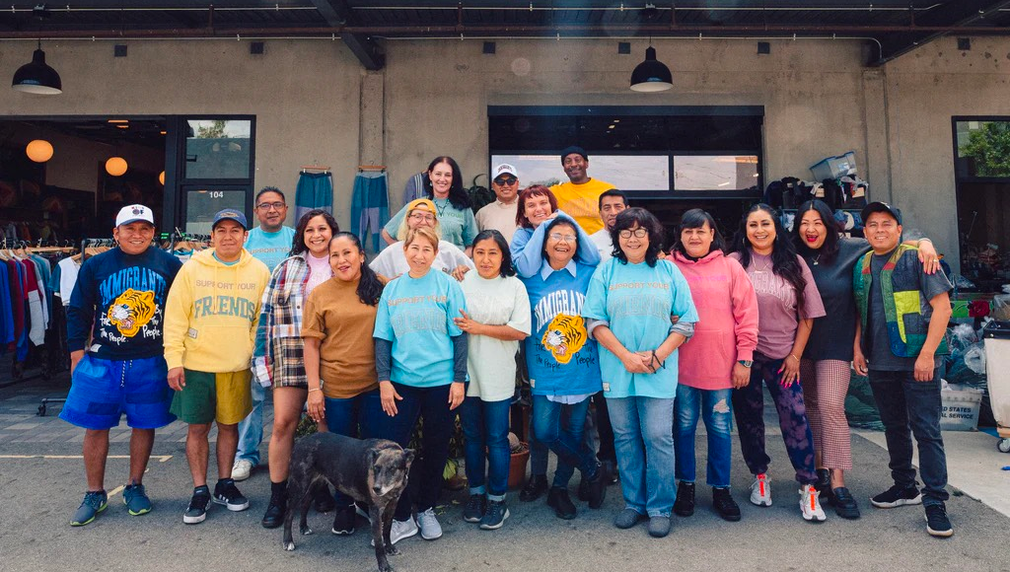SUAY REUSE FOR ALL
REUSE FOR ALL is a sliding scale program offering LA County residents the opportunity to participate in SUAY clothing repair and dye bath services at a sliding scale, ensuring the opportunity to extend the life of clothing is accessible to all. With the assistance of the LA2050 Grant, SUAY will pilot a customer-interface program that allows LA County residents to purchase reuse services at tiered pricing levels, increasing community adoption, while diverting textile waste from LA county landfills.

What is the primary issue area that your application will impact?
Climate and Environment
In which areas of Los Angeles will you be directly working?
Central LA
East LA
San Gabriel Valley
San Fernando Valley
South LA
West LA
South Bay
Antelope Valley
County of Los Angeles
City of Los Angeles
In what stage of innovation is this project, program, or initiative?
Expand existing project, program, or initiative
What is your understanding of the issue that you are seeking to address?
LA County is home to some of the most disproportionately disadvantaged communities affected by textile pollution and climate change. The average American throws away over 80 pounds of textile waste annually, and that continues to rise due to the lack of affordable access to repair and reuse for most consumers.
Describe the project, program, or initiative this grant will support to address the issue.
The REUSE FOR ALL pilot is a sliding scale payment program applied to SUAY's textile repair and dye bath services. The LA2050 Grant will fund the development and pilot of a customer interface tool to implement the REUSE FOR ALL sliding scale payment system for LA County residents. Partnering tech and outreach to scale this groundbreaking tiered pricing model. SUAY began its repair and dye bath services in 2021 and since its inception has already diverted hundreds of thousands of garments from landfills through these programs, with most participants residing directly in LA County, diverting a massive amount of textile waste from LA County landfill. In addition to education to shift reuse access and awareness to Los Angelenos.
Describe how Los Angeles County will be different if your work is successful.
SUAY is already a nationally recognized leader in textile repair and recycling that draws audiences to its facility in the Elysian Valley. SUAY is creating a model for major cities and local communities to repurpose and divert textile waste on scale, creating a culture of reuse. With the REUSE FOR ALL pilot, SUAY will be able to serve a greater portion of the local community by continuing to expand its affordable services. Expanding participation in these programs, SUAY will elevate Los Angeles as a model for the circular economy and create an easy and approachable way to repair garments. In addition, SUAY's revenue is redistributed back into the community through local hiring, paid job training, and career development for garment workers.
What evidence do you have that this project, program, or initiative is or will be successful, and how will you define and measure success?
Since its inception in 2017, Suay has diverted hundreds of thousands of pounds of textiles from LA county landfills (currently collecting over 6,000 pounds weekly) and has used this textile waste to create 100% post consumer remade apparel and home goods. In less than a year since its implementation, SUAY's repair program has serviced thousands of garments that would have otherwise gone to the landfill. If the number of times a garment is worn were doubled, GHG emissions of the apparel industry would be 44% lower. SUAY is empowering consumers to take responsibility for their textile consumption resulting in an impactful reduction of waste and harmful emissions. To support these programs, SUAY has created 28 new green jobs in Los Angeles county for garment workers that offer living wages, benefits, and paid training promoting skills development and career advancement. SUAY is proud of its 93% employee retention rate.
Approximately how many people will be impacted by this project, program, or initiative?
Direct Impact: 9,655
Indirect Impact: 232,247